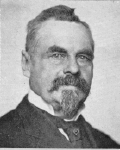
| 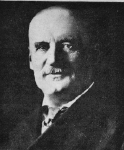
| 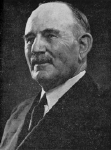
|
|---|---|---|
| Thomas Jeffery | Joseph Hudson | Charles Nash |
 Rambler History:
Rambler History:
Motor Trend / February 1963
Jeffery was serious and visionary enough about cars to buy a plant in Kenosha, Wisconsin, where he planned to manufacture automobiles on a large scale. His experimental prototypes of 1900 and 1901 used at least two radical innovations - steering wheels and front-mounted engines. But by the time Jeffery was ready for production in 1902, his father had talked him out of these wild dreams and convinced him to stick with tillers and engines under the seat.
American Motors corporation eventually sprang from these hectic beginnings. Between the buggy-like Ramblers of 1902 and AMC's establishment in 1954 passed such fondly remembered makes as Jeffery (1914-1917), Nash (1918-1957), Ajax (1925-1926), LaFayette (1934-1939), Hudson (1909-1957), Essex (1919-1932), Terraplane (1933-1938), Metropolitan (1954-1962), Nash-Healey (1951-1954), Hudson-Railton (1933-1938), and Hudson Italia (1954). But AMC was still a long way away.

| 
| 
|
|---|---|---|
| Thomas Jeffery | Joseph Hudson | Charles Nash |
From 1902 until 1908, Jeffery moved steadily to bigger, more reliable models. His cars were built on assembly lines (the second manufacturer to adopt them -- Olds was first), and in 1903 he sold 1350 Ramblers. By 1905, Jeffery more than doubled this number. One reason may have been because he went back to the steering wheel before 1904.
In 1907, he was building a large variety of different body styles and sizes. Among them was a five-passenger, $2500 Rambler weighing 2600 pounds and powered by a 40-hp engine. Cars were beginning to look like cars by then.
Jeffery died in 1910, and his son Charles took over. That same year, Joseph L. Hudson and seven business associates began producing a competing motor car called the Hudson. It was an immediate success, selling for $900-$1700 and eventually earning a solid reputation for quality and safety. But for the moment, Hudson and Jeffery were in two different camps.
The Hudson Motor Car Company, founded in 1909 and building its first cars in 1910, hit 17th place among manufacturers by the end of its first production year. Sales were about 5000. Rambler sales for the same period were some 2500 cars -- a self-imposed limit "in the interest of quality." Rambler built by far the more impressive automobile.
In 1911, Rambler offered an adjustable steering pillar, not unlike the modern multiple-position columns. Hudson brought out a "simplified chassis" and a four-cylinder en bloc engine with the magneto and water pump on a single drive. Hudson also had one of the first multiple clutch arrangements that year.

| 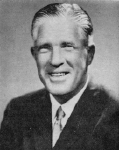
| 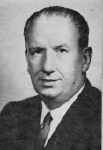
|
|---|---|---|
| Roy Chapin | George Romney | Roy Abernethy |
J.L. Hudson died in 1912, undoubtedly as contented with his cars' success as T.B. Jeffery. Two years later, Rambler's name was changed to Jeffery, in honor of the company's founder. After Hudson died, Roy D. Chapin headed the firm. Chapin had already helped found a motor company: Thomas-Detroit (later Chalmers-Detroit). He stayed with Hudson until his death in 1936, serving under Herbert Hoover in 1932 as Secretary of Commerce.
During the war years of 1914 to 1918, Hudson became the world's largest manufacturer of six-cylinder cars. Jeffery (soon to be Nash), became the world's largest producer of trucks. Jeffery had brought out a four-wheel-drive "Quad" truck in 1911, and this proved very popular with foreign governments for military use. During World War I, Jeffery Quads and Nash Quads played an important role for the Allies, and by 1918, 21,494 of these trucks were built under Army contract.
Charles W. Nash, in 1916, resigned his post as president of General Motors and took over the Jeffery Company. Next year, the first Nash made its bow, powered by an ohv Six. Concurrent with the Nash debut, Hudson organized the Essex Motor Car Company, which from 1919 until 1932 built light, spirited models. Essex' appeal was to the performance-minded and price-conscious -- in 1921 it offered a closed coach for only $300 more than its touring. In 1924, when six-cylinder cars were highly prized, it brought out a Six for less than $1000. Also in 1924, Hudson had reduced its coach to only $5 more than its touring car.

| |
|---|---|
| 1897 - First experimental Rambler | |
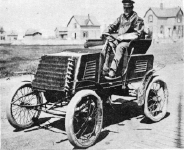
| 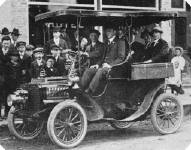
|
| 1901 Rambler, Model B | 1904 Rambler, Model L, with surrey top |
Nash, meanwhile, bought the LaFayette Motors Corporation. The name lay dormant several years while Nash produced the short-lived, Light-Six Ajax. Nash sales passed the 100,000 mark in 1926. That year, all Nash preferred stock was retired, and in 1927, the company announced that its employees owned $20 million in Nash shares. Thus Nash entered the Depression in good shape, and although sales fell sharply from 1929 to 1934, the company survived a time when many others didn't.
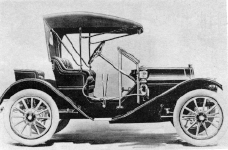
| |
|---|---|
| 1910 Hudson Roadster, Model 20 | |

| 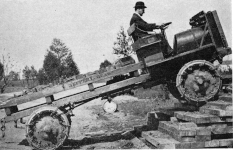
|
| 1911 Rambler and all-weather top | 1915 Jeffery Quad truck, 4-wheel drive |
The long-lived Hudson Super Six and straight-eight engines were developed early in the Depression. Nash also brought out an Eight. Hudson introduced the Essex-Terraplane, later dropping the name Essex altogether. Hudson and Terraplane also weathered the Depression, in spite of financial losses. In 1934, Nash revived the name LaFayette.
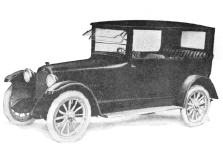
| |
|---|---|
| First Nash, a 1917 2-door hardtop | |

| 
|
| 1922 Essex coach | 1924 Essex 6-cylinder roadster |
The years 1935 and 1936 brought new spirit to the automotive industry. Nash offered its "sealed-in" engine in 1935 -- an arrangement which had the intake manifold case into the block. LaFayette accounted in some measure for the company's renewed success. The same year, 1936, saw Hudson introduce a double automatic braking system, with the mechanical linkage below the hydraulic pedal, so if the hydraulic system gave out, the mechanical would take over. This feature was standard on all Hudsons until 1954.
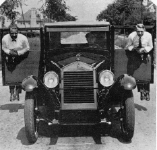
| 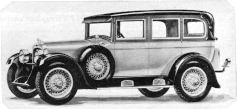
|
|---|---|
| 1926 Essex with piano-hinge doors | 1928 Nash, Model 338 - a best seller |
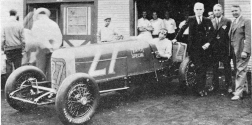
| |
| 1931 Hudson-engined Indy car (10th place) | |
In 1936 also, Nash merged with Kelvinator, and as a result, George W. Mason became chairman of the board at Nash. Mason had had experience with Studebaker, Dodge, and Chrysler. The year 1936 saw 53,038 Nashes and LaFayettes built, bringing in a net profit for the first time in four years.

| |
|---|---|
| 1931 Hudson special with Murphy body | |
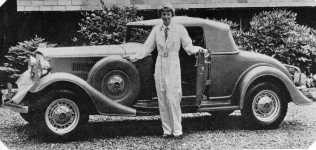
| 
|
| Amelia Earhart and her 1933 Terraplane convertible | 1933 Nash Ambassador 8 on 142-inch wheelbase |
Two years later, in 1938, Nash introduced the first "conditioned air" heating and ventilating system. This later became the famous "Weather Eye" temperature control, and one of the most practical automotive heating/venting units in the industry. In 1940, Nash again scooped its competitors with the "600" series, a light, economical, unit-bodied car which pioneered mass-produced unit construction.

| |
|---|---|
| 1936 Nash with double-bed option | |

| 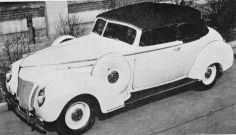
|
| 1936 LaFayette 3-passenger coupe | 1939 Hudson convertible brougham |
Automatic transmissions were being developed about this time, and Hudson brought out a combination automatic clutch and semi-automatic transmission in 1941. Shifting was by buttons on the dash.
During the years of World War II, both Nash and Hudson were busy in the nation's defense effort. It wasn't until 1948 and 1949 that Hudson and Nash brought out new designs. Hudson's famous "step-down" unibody and big-bore Six made their appearance in 1948; Nash brought out its "Airflyte" models the next year.

| 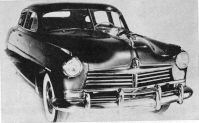
|
|---|---|
| 1941 Nash "600" with unit body | 1948 Hudson Commodore Eight sedan |
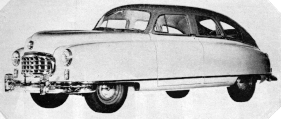
| |
| 1949 Nash "600" Airflyte | |
Development came fast and furious in the intervening time. The name Rambler meant a new small car in 1950. It marked the dawn of our present compact era, and turned out to be one of the few successful compacts introduced before 1960. The Nash-Healey, a forerunner of today's sports models, was born in 1951. Hudson brought out the thrifty Pacemaker and peppy Hornet that year. In late 1952, the Hudson Jet made the scene. And 1954 saw the experimental Hudson Italia.
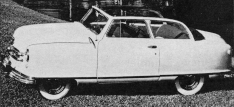
| |
|---|---|
| 1950 Nash Rambler convertible | |

| 
|
| 1951 Nash-Healey roadster | 1953 Hudson Jet |
1954 also saw the merger of two great and foundering companies. American Motors was formed, at first with Mason as chairman and president -- later, upon his death on October 8, 1954, with George Romney assuming leadership.
Sales were anything but startling at first, but the bright spot was the compact Rambler. Romney pushed for refinement of the small car, and it eventually pulled the corporation out of a major slump.

| |
|---|---|
| 1954 Hudson Hornet sedan | |
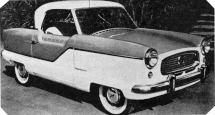
| 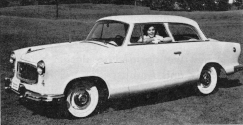
|
| 1956 Metropolitan hardtop | 1958 Rambler American 2-door |
The names Hudson and Nash finally disappeared in 1957. All descendants were called Rambler form then on. The popular Rambler American, revived in 1958, was a direct carryover from earlier models. It led AMC to an amazing third place in industry sales in 1960.
For the last few years, the company has held tight control of fourth place. Rambler wagons are first in sales as this is written. Romney's dynamic leadership is being carried on by the capable Roy Abernethy -- and in his hands, Rambler's production, sales, and initiative are keeping up their record pace.
This brief history doesn't pretend to give a complete picture of all AMC's predecessors' combined "firsts." But for the latest and most impressive of these, the Rambler Engineering story gives some of the reasons why Rambler received this year's (1963) Car of the Year award. This story is coming in August.